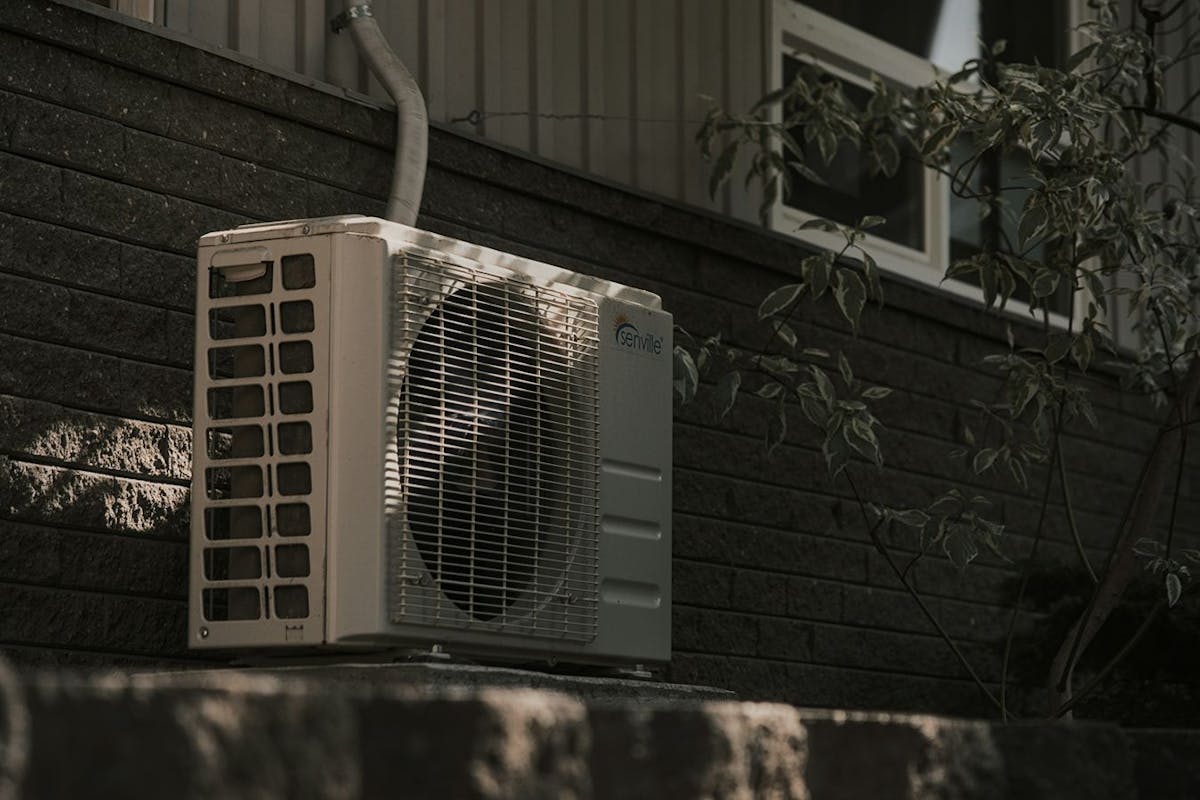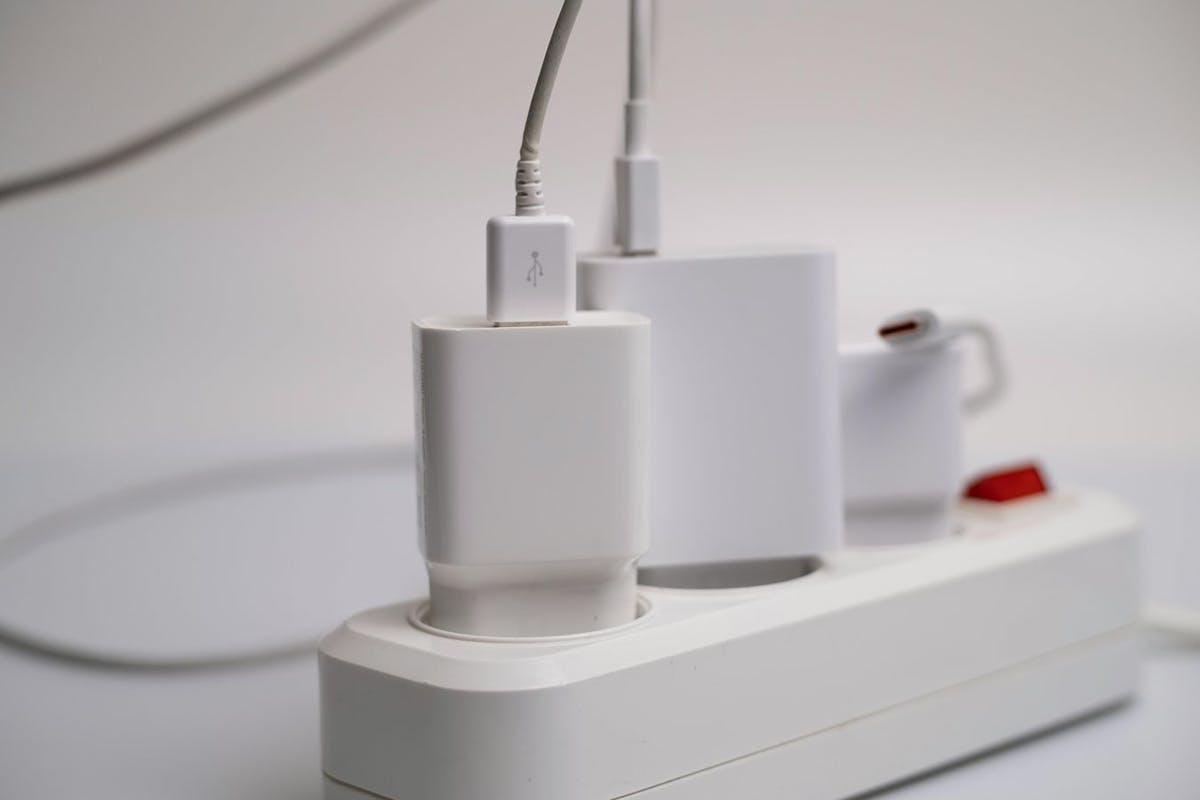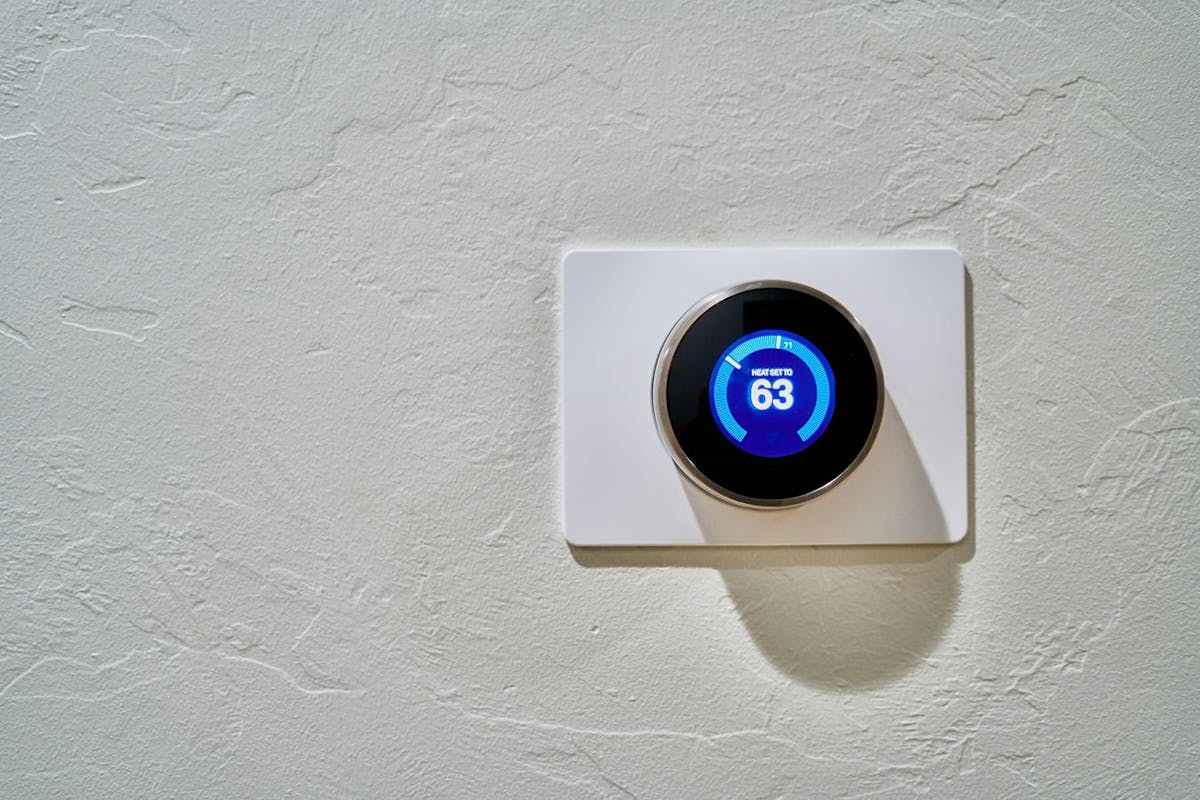How to Save Money With A Smart Thermostat: Everything You Need to Know
Last edited

Author
Andrew Giermak
Solar and Electrification Writer and Editor

Editor
Ryan Barnett
SVP, Policy & New Market Development

Smart thermostats have simple, remote features you can use, anywhere, anytime, to save money and use less energy. Plus, since you can easily control the environment in your home from anywhere, you get the temperature you want while seeing the savings on your power bills no matter where you are.
From the smart features, to popular brands, and how to get the most savings, here’s why more homeowners are using smart thermostats.
See how much you can save with home energy changes
What Is a Smart Thermostat?
A smart thermostat is a Wi-Fi-enabled device that allows you to control your house's temperature from anywhere via a smartphone app or voice-assisted virtual assistant. With this device, you no longer have to worry about your heating, ventilation, and air conditioning (HVAC) system heating or cooling an empty home without your knowledge. Using a smart thermostat can help you save money while keeping your home comfortable.
Will a Smart Thermostat Save You Money?
This is a good question, and the answer is affected by many factors: your habits, the size and layout of your home, seasonality, the location of your home, the condition of your HVAC system, and more.
On average, home heating and cooling typically consumes 41%-63% of your electricity bill. Energy Star, from the US Department of Energy, estimates an Energy Star-certified smart thermostat will save about 8% on a home’s annual heating and cooling bills, or about $50 a year. The Department of Energy says that you can save up to 10% of your electricity bill if you adjust your thermostat by at least eight degrees from its normal setting for at least eight hours daily.
With a smart thermostat, you can reduce your energy costs without sacrificing comfort or making manual changes to your thermostat.
How Do Smart Thermostats Save Energy?
Smart thermostat technology helps you automatically use your HVAC system more efficiently. You can schedule your thermostat to adjust to an energy-saving setting when going to bed or leaving the house.
Create a schedule with an app
Older versions of programmable thermostats can be scheduled, but it could be a confusing and challenging process.
One of the main advantages of a smart thermostat is you can pre-set your preferences from your smartphone. Top-of-the-line models like ecobee and Nest can learn based on your settings and habits. Just allow them some time to learn your behaviors and habits, and you’ll see smart thermostat savings in no time.
Adjust the temperature when you leave
Many smart thermostats have built-in sensors that can detect when you’ve left the house and adjust the temperature setting accordingly. Some models work with sensors around your house, like motion sensors.
Most smart thermostat companies include a geofencing feature in their models. These models can use your smartphone's location to know precisely when you're home or away. Also, they can remember to adjust your thermostat when you go to sleep.
Pro tip: Don't forget to pair everyone's smartphone with the geofencing technology. You don't want the temperature to change when one person leaves the house even though everyone else is still inside.
Remote access to your thermostat
You can easily access your thermostat remotely to change settings by connecting your smartphone. For example, if you forget to adjust your thermostat when going on vacation, you can just open the app and make the changes without a worry.
Adjust automatically during peak usage
Does your city have cost-saving programs that provide energy bill credits? You can take advantage of them with the help of a smart thermostat, especially if your prior efforts didn’t bear significant results.
For instance, San Diego Gas & Electric's AC Summer Saver program can adjust your device remotely when the city experiences high demand. You can assist the city and save some money in return if you allow your house temperatures to go a bit higher during peak usage.
Visit your local utility company's website to check if your city has similar programs.
Track your energy usage
If your energy saving efforts aren’t paying off a smart thermostat can help. Many popular models provide a report detailing how much energy you've used. Nest shows a leaf icon to indicate your thermostat settings helped you save energy. Others, like ecobee, provide a dashboard showing your electricity use in real-time.
Separate temperature sensors provide more control
If your home experiences inconsistent temperature from one room to another, you should use a model compatible with separate room sensors, such as ecobee or Honeywell T9.
This energy saving thermostat category comes with additional occupancy detectors to sense if a particular room has an occupant and adjust the temperature accordingly. There's no need to cool down the whole house just to bring comfort to a room that always seems to be too warm or too cold.
With those sensors, you can also pre-schedule temperatures across various rooms. So you can have different settings in your office, bedroom, and living rooms respectively at different times of day, depending upon your schedule.
Automatic reminders to change your filters
You must change your HVAC system’s air filter periodically to ensure it operates efficiently, saving you money.
Smart thermostats can send you alerts to change your filter. These reminders work automatically to ensure you don't miss the routine.
See how much you can save with home energy changes
Popular Smart Thermostat Brands
There are many smart thermostats on the market. You should compare them before purchasing to find one that fits your needs. Here are some of the most popular brands and their products.
- ecobee: Smart Thermostat Premium, Enhanced, Essential
- Emerson: Sensi
- Honeywell: Wi-Fi Smart, The Round, T5+, T9, T10
- Nest: Nest Learning Thermostat, Nest Thermostat
- Lux: Kono, Geo, CS1, Brio
- Mysa: Smart Thermostat
Smart Thermostats Compatible With Virtual Assistants
Apart from smartphone apps that control your smart device, voice-controlled virtual assistants can do the job with simple commands. These tools include:
- Amazon Alexa
- Apple Siri (Part of Apple HomeKit)
- Google Assistant
Using a virtual assistant is easy. For example, if you're using Google Assistant connected to your smart thermostat, start by commanding: “Hey Google”, then make your request:
”Reduce the temperature to 70 degrees.”
“What's the temperature?”
Be sure to research each virtual assistant to determine compatibility and suitability for your needs.
Other Things Your Smart Thermostat Can Do
You can also lower your energy usage and bills with the extra features and settings offered by many smart thermostats. Some of these features require extra setup, while others require additional devices to enable.
Taking full advantage of all of the smart settings typically requires pairing your smart thermostat with other smart home devices. Services like IFTTT (If this, then that) are compatible with various devices such as security systems and smart windows and can be used to program more advanced combinations of features and devices.
Turn off when a window is open
Opening windows while your HVAC system is running leads to wasting energy. Sensors can be used to automatically switch your system off when someone opens a window.
Use ceiling fans
You can pair a smart switch to your ceiling fans and program them to switch on when your home reaches a given temperature. The idea is for your smart home to turn on the fans while the HVAC system is running to better disperse the air.
If you want to adjust temperatures by just a few degrees, the smart home thermostat can be programmed to turn on the fans first before turning on the heater or air conditioner, so you run that system less. The less you switch on the AC or heater, the more money you save in the long run.
Set the temp you want, without running the HVAC all the time
You want your home to be comfortable when you get home from work, or if you’ve been gone for a few days, but it’s a waste to run the heat or AC the whole time. Instead, a smart thermostat can be programmed to run at a minimal level, or be off, and then go up or down to the temperature you want in the most energy-efficient way for when you get home.
How Do You DIY Install a Smart Home Thermostat?
Most smart thermostats are relatively easy to install. Follow these general steps for a successful DIY installation.
- Check the smart thermostat is compatible with your HVAC system and phone and/or virtual assistant you plan to use.
- Turn off power to the existing thermostat.
- Connect the new smart thermostat to your HVAC system using the necessary wires.
- Turn on the power to your new smart thermostat.
- Download the thermostat’s app on your phone and sync it with the device to link your thermostat to your home’s Wi-Fi and program your initial settings.
There you go. If you’re not comfortable with this type of DIY project, seek the help of a professional HVAC technician.
Importance of the C-wire
Like most smart devices, your smart thermostat relies on Wi-Fi to connect to the internet so it can do its job. That means it needs low voltage wiring for power.
A common wire (also known as the C-wire) powers your smart thermostat continuously so it’s connected to the internet even when not operating the HVAC system. Also, it keeps the display on.
However, not every home will have a C-wire because the furnace thermostat on older HVAC systems didn’t need electricity, since mercury thermometers were completely mechanical. Some smart thermostats won't work without a C-wire. While you could add a C-Wire yourself, that makes the installation more complicated. Moreover, if you must add a C-Wire, the work is best done by a professional electrician.
What Types of Heating Systems Work With Smart Thermostats
Some heating and cooling systems may not be compatible with a smart thermostat. Also, if you have an energy-efficient or smart HVAC system, a smart home thermostat might still offer the added benefits of programming and scheduling, but it won't help you save as much money.
Many homes with heat pumps can enjoy smart thermostat energy savings. But the benefits may not be as significant if a home uses hydronic heating systems like radiant underfloor, water, and steam.
Also, electric baseboard heating produces the least results regarding energy-saving. However, some smart thermostat models designed specifically for baseboard heating claim they can deliver up to 26% savings on your energy bill.
Can a Smart Thermostat Damage Your HVAC?
If you’re concerned a smart thermostat can pose risks to your HVAC system, the good news is you don’t have to worry. As long as a professional has confirmed the system's compatibility and installed the device with the correct wiring, you will be fine.
How Much Does a Smart Thermostat Cost?
If you’re considering buying the best smart thermostat for your home, price plays a significant role. After all, your ultimate goal is to save money on your heating and cooling costs without compromising quality and comfort.
Some of the more popular models currently retail at these prices:
- ecobee3 Smart Thermostat Essential: $129
- Amazon Smart Thermostat: $80
- Honeywell The Round Smart Thermostat: $249
- Nest Learning Thermostat: $249
- Lux Kono: $99
- Emerson Sensi Smart Thermostat: $79
Rebates and Incentives Available For Smart Thermostats
A higher-priced smart thermostat can make buyers second-guess their purchase, but they will enjoy sizable benefits over time. You can typically recoup the cost within two years, and you can sometimes get additional incentives to use them to save energy.
Many energy companies provide rebates on smart thermostats to entice customers to cut down their energy consumption. For example, San Diego Gas & Electric currently offers a rebate of $40-$75.
A smart thermostat can save you energy without sacrificing comfort or effort. For many homeowners, a smart thermostat can lower energy use and utility bills while enhancing comfort.
If you’d like to find out more about energy saving products, including energy-efficient heat pumps, go to our energy advisor page to see what you can save.
See what home electrification can do for you:
Frequently Asked Questions
Do smart thermostats save money?
Smart thermostats can decrease your energy usage on home heating and cooling which will save money. Estimates from the Department of Energy say a smart thermostat cuts about 8% of a home’s heating and cooling energy costs.
Can I get a rebate for installing a smart thermostat?
Some utilities or localities offer rebates and some smart thermostats are eligible for federal tax credits under the Energy Efficient Home Improvement Credit.


